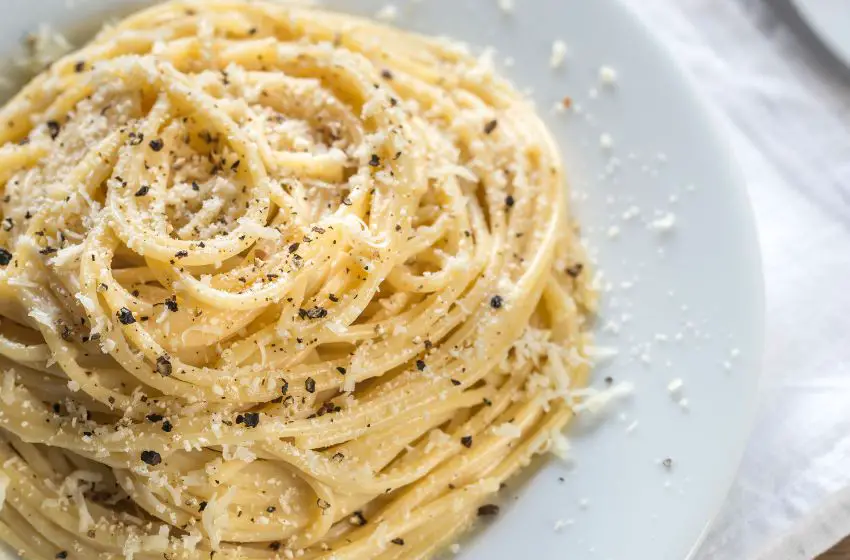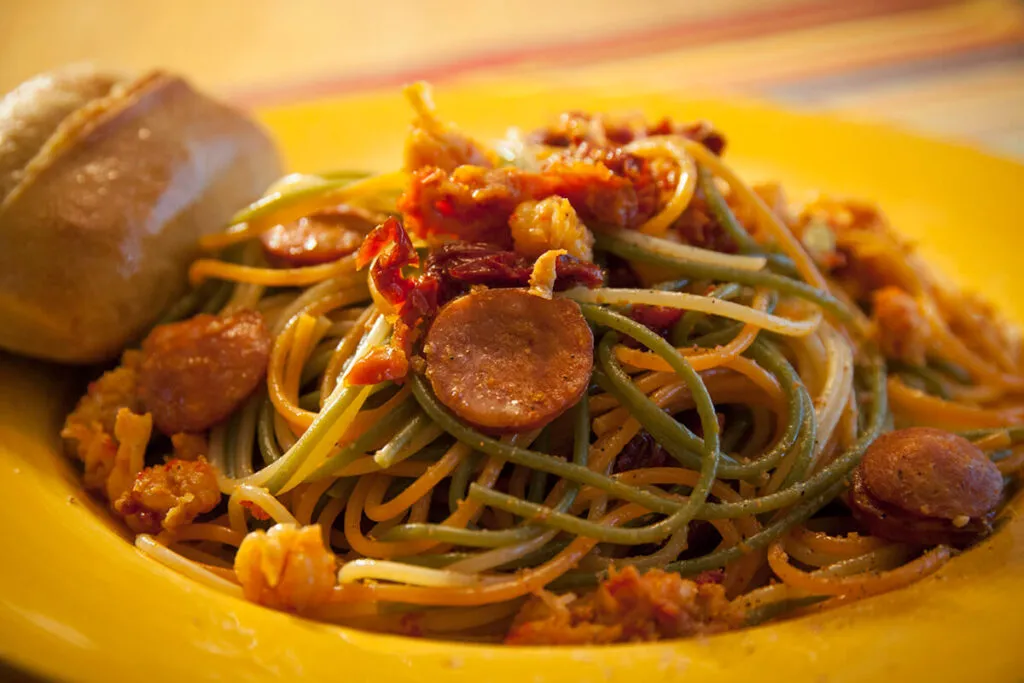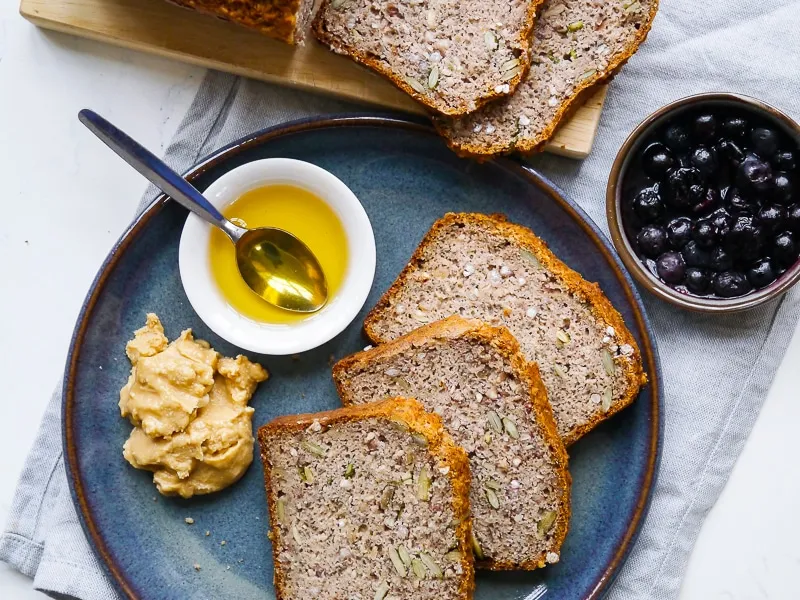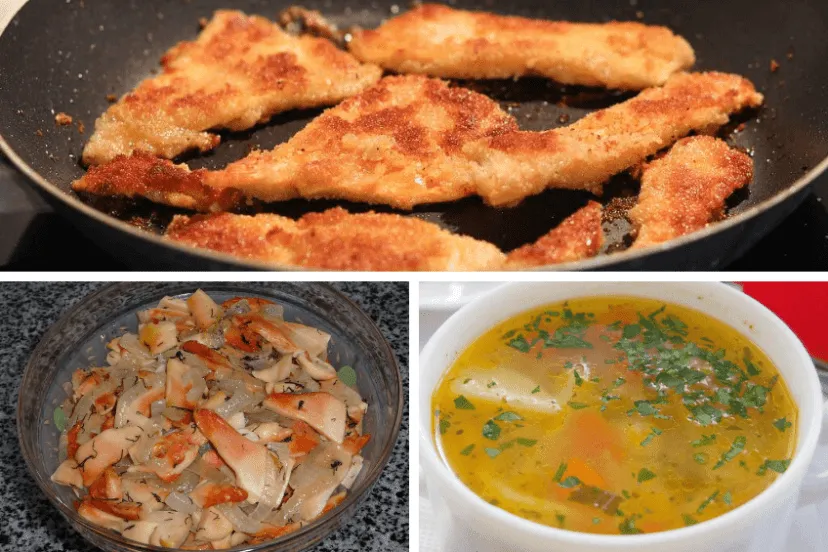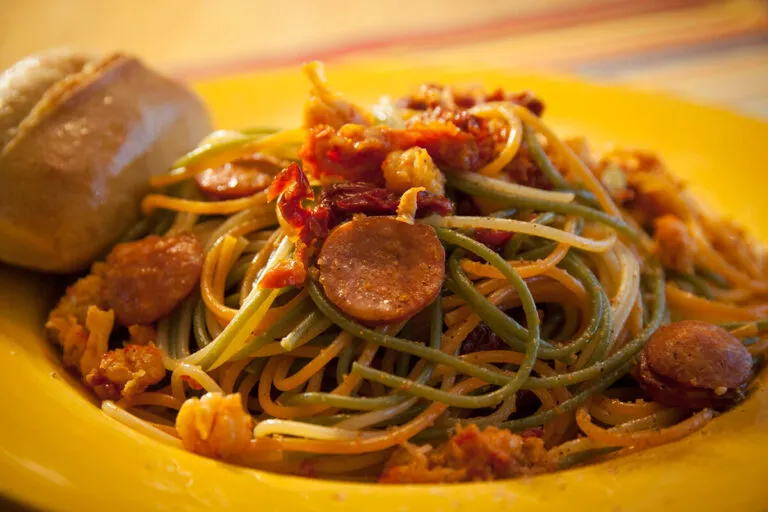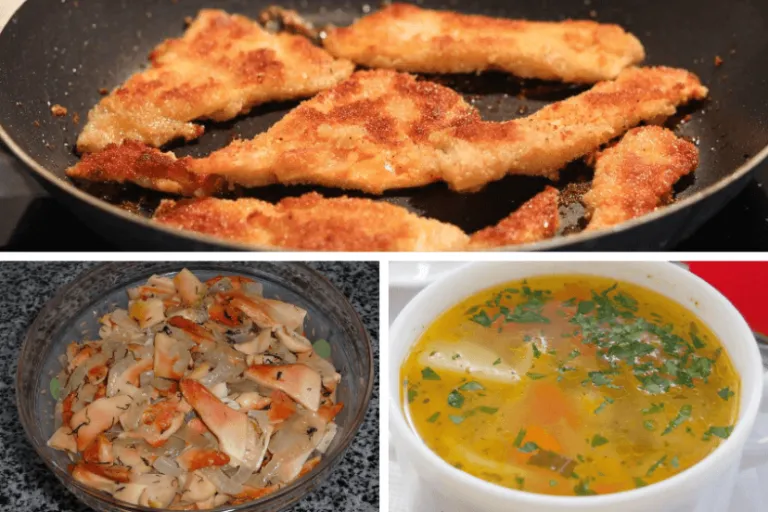The Roscioli Roman Cacio e Pepe recipe is a classic Roman pasta dish showcasing simple flavors. This traditional recipe involves pasta, Pecorino Romano cheese, and freshly cracked black pepper, harmoniously blending to create a creamy and savory dish that is sure to delight your taste buds.
The dish’s beauty lies in its simplicity and the quality of the ingredients used, making it a favorite among pasta lovers worldwide. Whether you are a seasoned chef or a novice cook looking to impress, mastering this Cacio e Pepe recipe will transport your senses to the heart of Rome with each flavorful bite.
Let’s dive into the details of this iconic dish and learn how to recreate it in your own kitchen.
Table of Contents
ToggleIngredients
When it comes to creating an authentic and mouthwatering Roscioli Roman Cacio e Pepe at home, it’s crucial to pay close attention to the ingredients you use. From the sharpness of the Pecorino Romano cheese to the bold flavor of the black pepper, each component plays a vital role in elevating this classic Roman dish.
Pecorino Romano Cheese
The star of the show, Pecorino Romano cheese is a crucial ingredient in this recipe. Its sharp, salty flavor is what gives Cacio e Pepe its distinctive taste. Make sure to opt for high-quality, freshly grated Pecorino Romano cheese to achieve the true essence of the dish.
Black Pepper
The bold, spicy kick of freshly ground black pepper is the second key component of this delectable dish. It’s important to use freshly cracked black pepper to ensure maximum flavor. The pepper’s heat should be assertive without overpowering the rich, nutty notes of the Pecorino Romano.
Pasta
The pasta ties it all together, and in the traditional recipe, tonnarelli or spaghetti are typically used. The choice of pasta plays a vital role in creating the perfect texture and mouthfeel for the dish. Opt for high-quality, durum wheat pasta to achieve the desired consistency.

Preparation
Discover the authentic preparation steps for the Roscioli Roman Cacio E Pepe recipe. This cherished Italian dish requires precise techniques like using high-quality Pecorino Romano and freshly ground black pepper. Elevate your culinary skills by following this simple yet delightful recipe.
Grating The Cheese
To start, grate Pecorino Romano cheese finely using a microplane grater.
Cooking The Pasta
Next, bring a pot of salted water to a boil, then add the spaghetti and cook until al dente.
Making The Sauce
Making the sauce for Roscioli Roman Cacio E Pepe recipe is a crucial step in achieving its rich and creamy consistency. Here’s how you can create the Cheese Paste and mix it with pasta to elevate the flavors.
Creating The Cheese Paste
1. Grate Pecorino Romano and Grana Padano cheeses finely.
2. Combine cheeses with black pepper in a bowl.
3. Add a bit of pasta water to create a smooth paste.
Mixing With Pasta
1. Cook the spaghetti al dente to reserve some cooking water.
2. Combine the pasta with the cheese paste in a skillet over low heat.
3. Add some olive oil and toss until the sauce coats the pasta evenly.
Cooking Technique
Roscioli’s Roman Cacio e Pepe is a beloved classic dish in Italian cuisine, known for its simplicity and depth of flavor. The key to achieving the perfect creamy texture lies in the cooking technique. Let’s take a closer look at the essential elements of the technique that contribute to the exquisite taste and texture of this traditional Roman pasta dish.
Achieving The Creamy Texture
Achieving the creamy texture in Cacio e Pepe relies on the right sequence of incorporating the ingredients. Heat plays a crucial role in this process, as it helps to melt the cheese and form a smooth, creamy sauce. The gradual addition of cheese and pasta water while constantly stirring is essential to achieve the desirable consistency.
Incorporating Pasta Water
Incorporating pasta water is a pivotal element in creating the velvety sauce of Cacio e Pepe. The starch-rich pasta water helps to emulsify the cheese and pepper, binding them together to create a luscious coating for the pasta. It also aids in adjusting the thickness of the sauce, ensuring it perfectly coats the pasta strands.

Serving Suggestions
When it comes to serving cacio e pepe, there are a few simple, yet impactful, ways to elevate the dish and wow your guests. From garnishing with additional cheese to pairing it with the perfect wine, here are some fantastic serving suggestions that will take your Roscioli Roman Cacio E Pepe Recipe to the next level.
Garnishing With Additional Cheese
Garnishing your cacio e pepe with additional cheese is a guaranteed way to enhance the flavors and add an extra layer of richness to the dish. When serving this delicious Roman pasta, consider these options for garnishing:
- Sprinkle freshly grated Pecorino Romano or Parmigiano Reggiano on top of the pasta, allowing the heat of the dish to melt the cheese slightly for a gooey texture.
- Create cheese shavings using a vegetable peeler and scatter them on the plated cacio e pepe, adding a visual appeal to the creamy pasta.
- For a striking presentation, serve the pasta in individual bowls or plates, allowing each guest to sprinkle their preferred amount of cheese on top.
Pairing With Wine
A fantastic way to complete the cacio e pepe experience is by pairing it with the perfect wine. The right wine can enhance the flavors of the dish and create a harmonious balance. Consider these wine options to accompany your Roscioli Roman Cacio E Pepe Recipe:
| Wine Varietal | Pairing Suggestion |
|---|---|
| Vermentino | The crisp acidity and floral notes of Vermentino complement the creamy and peppery flavors of cacio e pepe. |
| Gavi | A dry and citrusy Gavi wine balances the richness of the pasta dish, creating a refreshing and delightful combination. |
| Chianti Classico | The medium-bodied and fruity nature of Chianti Classico harmonizes well with the flavors of cacio e pepe, enhancing the overall taste. |
When serving cacio e pepe with wine, remember to chill the white wine varieties, such as Vermentino and Gavi, to the right temperature for maximum enjoyment. And for reds like Chianti Classico, allowing the wine to breathe before pouring can enhance its flavors.
By garnishing your cacio e pepe with additional cheese and pairing it with the right wine, you can create a memorable dining experience that showcases the best of Roman cuisine. Try these serving suggestions with your Roscioli Roman Cacio E Pepe Recipe and enjoy the perfect indulgence.
Tips And Variations
Discover exciting tips and creative variations to elevate your Roscioli Roman Cacio E Pepe recipe with new flavors and textures. Experiment with fresh herbs, gourmet cheeses, and different pasta shapes to customize this classic dish to your taste preferences.
Adding Butter for Extra Creaminess To take your Roscioli Roman Cacio E Pepe recipe to the next level of indulgence, try adding a pat of butter to the dish. By melting a small amount of butter into the warm pasta, you can enhance its creamy texture and deepen its richness. The butter blends harmoniously with the cheese and pepper, creating a velvety sauce that coats each strand of pasta. This extra touch of decadence is perfect for those looking to elevate their classic Cacio E Pepe experience. Experimenting with Different Cheeses While Pecorino Romano is the traditional cheese used in Roscioli Roman Cacio E Pepe, don’t be afraid to explore other options. Experimenting with different cheeses can introduce new flavors and textures to this beloved dish. Try substituting some or all of the Pecorino Romano with Parmesan, Grana Padano, or even a combination of these cheeses. Each cheese brings its own distinct characteristics, adding depth and complexity to the dish. The key is to choose high-quality varieties, preferably aged, for the best results. Another interesting alternative is using a mix of different hard cheeses like Asiago, Manchego, or even an aged Cheddar. This allows you to create a unique twist on the classic recipe, tailored to your personal taste preferences. Whether you choose to stick to tradition or venture into new cheese territory, the important thing is to savor each bite and enjoy the experience of exploring different flavors. By adding butter or experimenting with different cheeses, you can put your own spin on the timeless Roscioli Roman Cacio E Pepe recipe. These tips and variations allow you to tailor the dish to your preferences, creating a truly personalized dining experience. So don’t be afraid to get creative and make this beloved Italian staple your own!
Frequently Asked Questions On (Roscioli Roman Cacio E Pepe Recipe)
What Is The Traditional Recipe For Roman Cacio E Pepe?
The traditional recipe for Roman cacio e pepe consists of only three ingredients: pasta, pecorino Romano cheese, and black pepper.
How Do You Achieve The Perfect Creamy Texture In Cacio E Pepe?
To achieve the perfect creamy texture in cacio e pepe, it’s important to add a small amount of pasta cooking water and vigorously toss the pasta with the cheese and pepper until it emulsifies into a creamy sauce.
Can Cacio E Pepe Be Made With Other Types Of Cheese?
While pecorino Romano cheese is traditionally used in cacio e pepe, some variations may use Parmigiano-Reggiano or a combination of both cheeses.
What Type Of Pasta Is Best Suited For Cacio E Pepe?
The best pasta for cacio e pepe is typically long and thin, such as spaghetti or tonnarelli, as they allow the sauce to cling to the strands.
Conclusion
Indulge in the traditional flavors of Rome with the exquisite Roscioli Roman Cacio E Pepe recipe. Elevate your culinary experience with this simple yet sophisticated dish that captures the essence of Italian cuisine. The tantalizing blend of cheese and pepper will surely leave you craving for more.
Explore the authentic tastes of Italy right in your own home.

